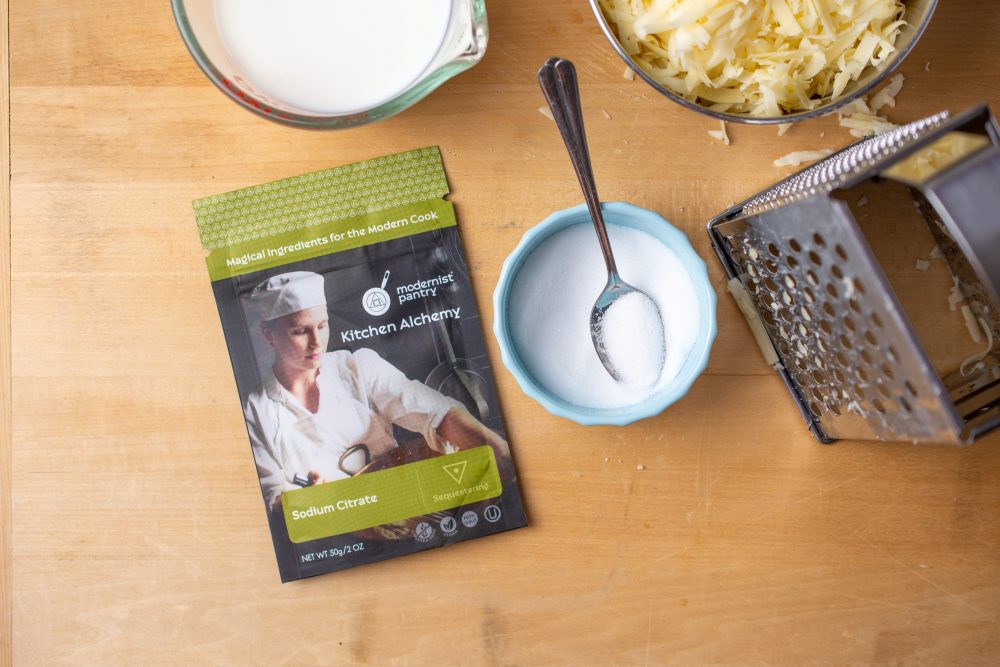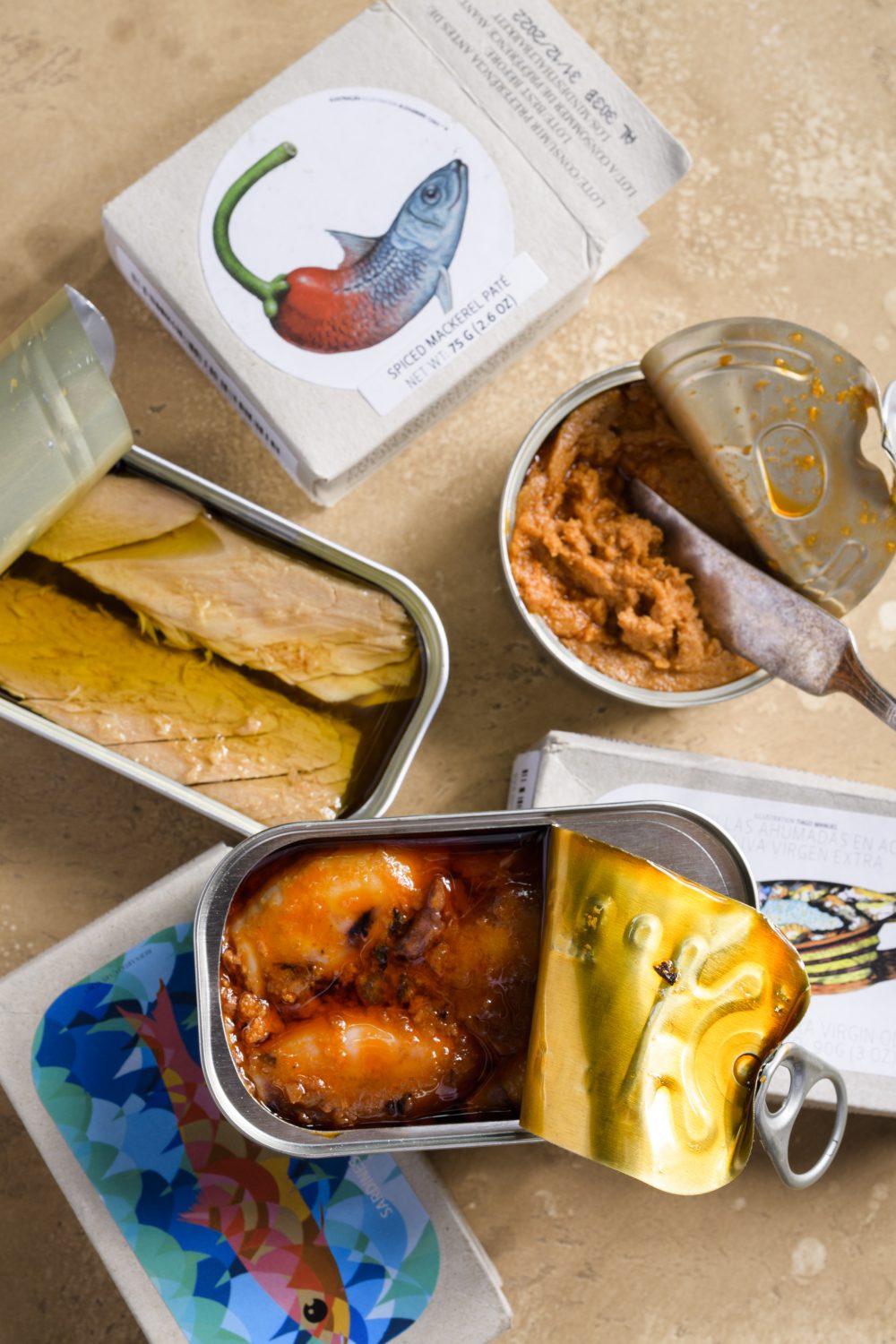
Not Your Typical Tinned Fish
For many in the U.S., talk of tinned fish brings to mind disappointing tuna salads. But in Southern Europe, it’s a delicacy. And tuna is just the start. Tins of high-quality, richly flavorful seafood packed in olive oil and seasonings are a classic tapa, often paired with bread and wine. Online and gourmet shops offer numerous varieties at a range of prices. One of our favorite producers is Portugal’s José Gourmet, which offers dozens of options packed in whimsically illustrated boxes, including sardines in lemon and olive oil; spiced mackerel pâté; cod with olive oil and garlic; and spiced octopus. We particularly love the spiced calamari in ragout, which is meaty and savory, with just a little heat. Check the selection at JoseGourmet.com; many are also available on caputos.com starting around $6.
The Sweet Side of Sriracha
The world is awash in artisanal hot sauces, so it’s not often we get excited about a new one. But Bushwick Kitchen’s Weak Knees Gochujang Sriracha rekindled our faith. The Brooklyn company’s sauce combines the richness of fermented Korean gochujang with the tangy-sweet spice of Sriracha. The result is almost barbecue sauce good, and it packs more sweet than heat. Available in 10.5-ounce bottles at Bushwick Kitchen.com for $11.
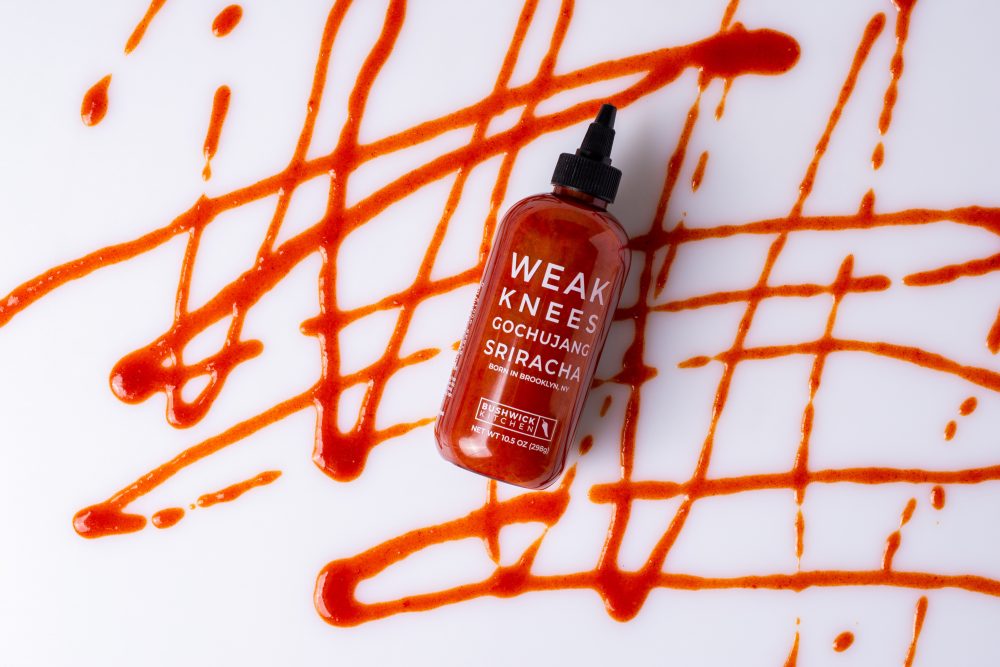
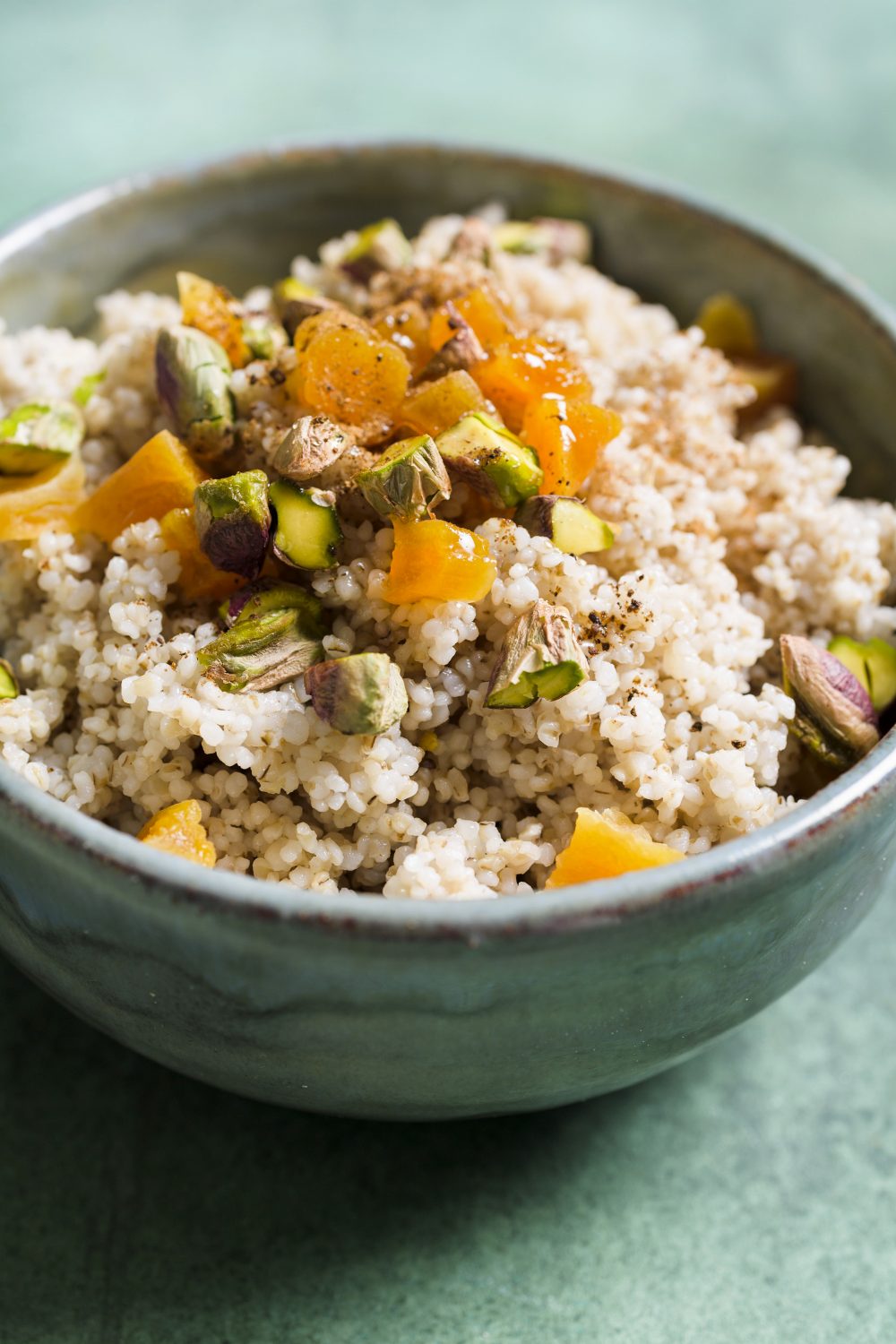
A Different Take on Classic Couscous
The couscous most of us know is made by steaming tiny pellets of semolina flour, the same grain used to make many varieties of pasta. But we were excited to learn that in Morocco semolina is just the start. Couscous belboula is made from ground barley using a similar process. It has a firm bite and pleasant nutty flavor, and is a great substitute for the semolina version in salads or dishes with heartier flavors. And like traditional couscous, it can be prepared in about 10 minutes. In addition to the usual savory uses, we like it for breakfast as an oatmeal alternative sprinkled with diced dried apricots, chopped pistachios, a pinch of cinnamon and ground cloves, and a drizzle of honey. We like Alaska Flour Company’s barley couscous, sold at alaskaflour.com for about $6 for a 1-pound bag.
A Sleek Way to Simmer
In Japan, cooks have a clever tool for ensuring simmering foods stay below the liquid, rather than bob along the surface. They use an otoshibuta, or drop lid. Though traditionally made of wood, we like the new stainless steel versions, which can be adjusted to fit a variety of pot sizes. They also don’t absorb flavors the way wood can. To use, the otoshibuta is simply set over food in simmering liquid, weighing it down just enough to keep it below the surface. We like to use it when blanching kale or chard, which can puff above the boiling water, or to keep legumes, such as black-eyed peas or lentils, fully submerged. Otoshibutas are available online and in Asian markets; we got ours from JapanHandmadeonline.com for $16.
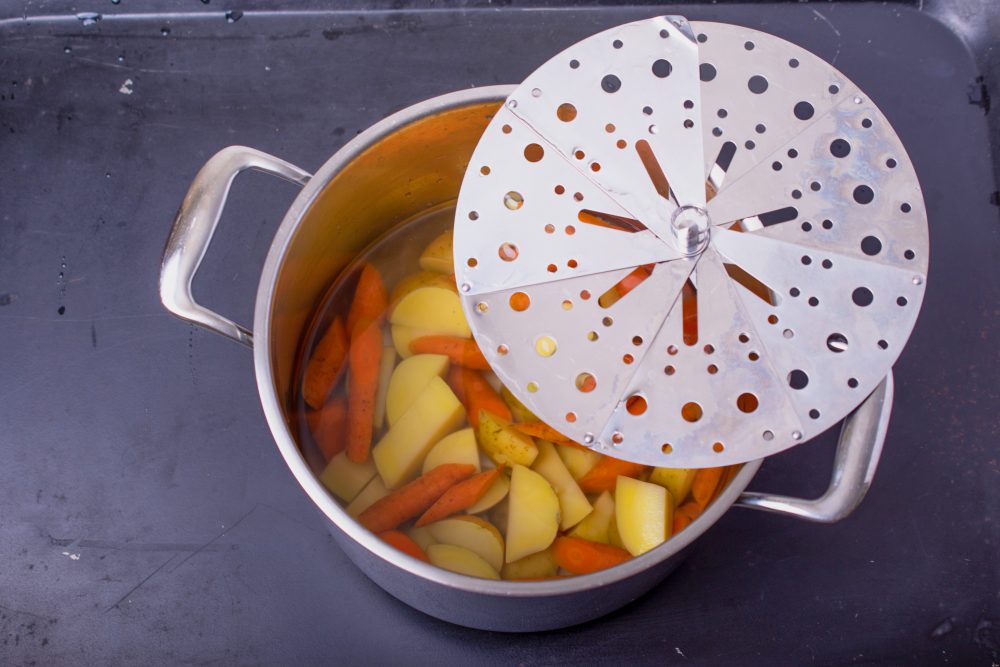
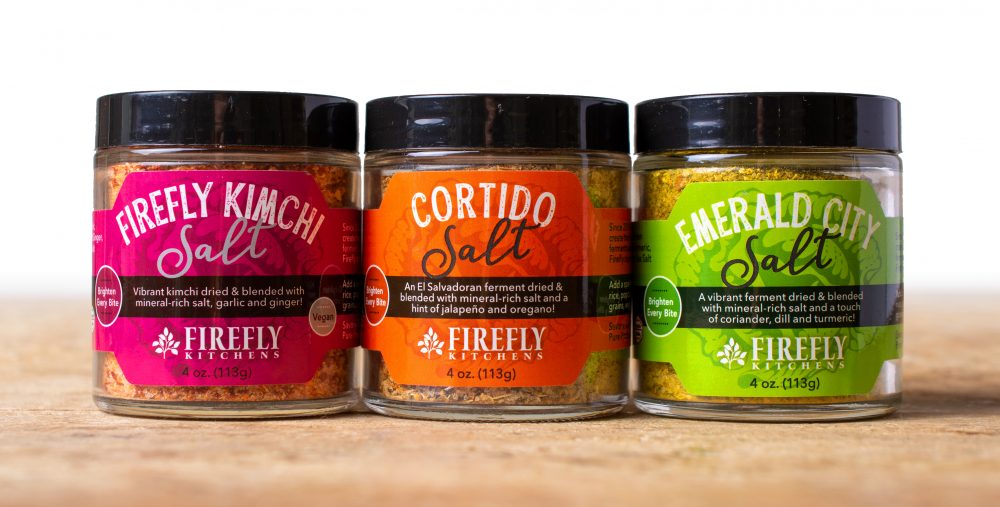
The Fermented Side of Flavored Salts
We love the deeply savory flavors fermented foods add to our cooking, so it’s no surprise we love the way Firefly Kitchens combines those flavors with salt to create delicious seasoning blends. The Seattle company dries ingredients such as Korean kimchi, then blends them with coarse sea salt. Their Firefly Kimchi Salt packs a gentle, vinegary-sweet heat that lingers pleasantly. It’s great on scrambled eggs or grilled meats. Salvadoran-inspired Cortido Salt is earthy and savory with a bright herbaceous punch, perfect for grilled meats for tacos or on french fries. A three-pack of 4-ounce jars—which also includes the company’s Emerald City Salt, a blend of fermented dill, coriander and turmeric—is available for $38 at FireflyKitchens.com.
The Secret to the Creamiest Cheese Sauce
Making creamy-smooth cheese sauces can be frustrating, particularly if you want to use quality cheeses such as aged cheddars or blue cheeses. This is because as cheese melts, it tends to separate into a gloopy mess of fat and water. Classic solutions involve adding starchy flour or cornstarch to bind the proteins together, yet those same starches can muddle flavors. Processed cheeses melt smoothly thanks to added emulsifiers, usually sodium salt, which keeps the proteins together. But as we learned in Nathan Myhrvold’s “Modernist Cuisine at Home,” this trick is easily replicated by the home cook. The secret is sodium citrate, an inexpensive and widely available salt made from fruit-derived citric acid. A few grams added to warm milk allows almost any cheese (aside from hard cheeses like Parmesan) to melt smoothly, creating the perfect creamy sauce for pasta, vegetables or even just dunking hunks of bread. We like a mix of sharp cheddar and Gruyère, but nearly any combination of strongly flavored cheeses works. To make the sauce, in a large saucepan over medium, whisk together 11⁄4 cups whole milk and 10 grams sodium citrate (about 11⁄2 teaspoons) and bring to a simmer. Reduce the heat to low and slowly whisk in 4 cups grated cheese until smooth. Taste and season with kosher salt and ground black pepper. ModernistPantry.com sells 50-gram packets of sodium citrate for about $6.
